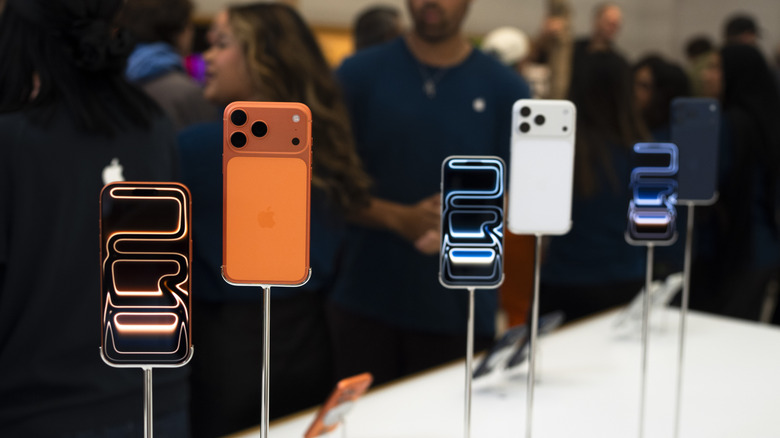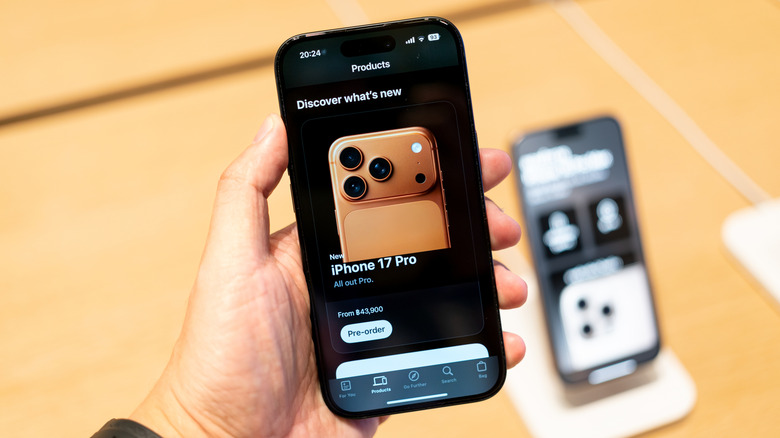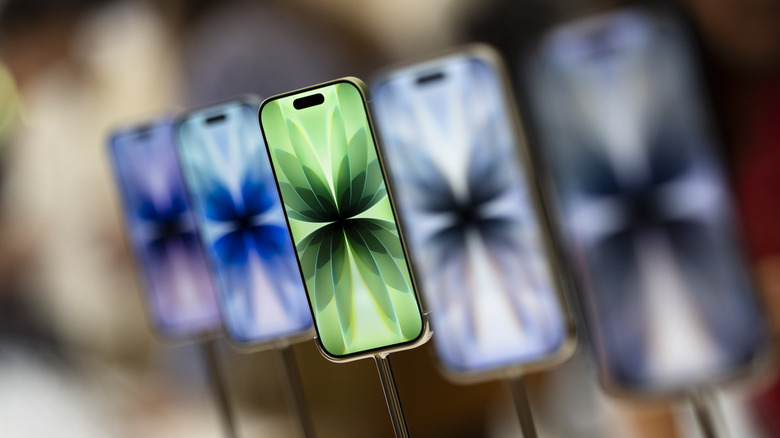Who Makes Apple's iPhone 17 Screens? (Hint: It's Not Apple)
It's hard not to be enamored by the iPhone 17's Super Retina XDR display. ProMotion support brings about smoother animations at a 120Hz refresh rate, and the 3000 nits peak outdoor brightness makes every photo from the 48MP Fusion Main camera appear more vivid than ever. Technological marvel that it is, Apple isn't the only company that deserves a pat on the back.
Most screens from the iPhone 17 lineup are manufactured by LG or Samsung, with BOE Technology Group working to produce screens for the phones in China. There are several reasons why Apple works with more than one company for its components, but one factor is access to cutting-edge manufacturing that Apple may not posses in-house. Whether you're simply checking out the new iOS 26 features, or admiring how bright the colors appear as you stream Apple TV+, know that the glowing OLED screen required complex collaboration from Apple and its suppliers.
Who supplies the iPhone 17 display?
Apple outsources many of its components to other manufacturers, often relying on multiple suppliers for the same part. This not only ensures the integrity of the iPhone's supply chain, but it can also be cheaper to outsource certain components versus building new production facilities. It also gives Apple the opportunity to focus more on research and development rather than production.
This holds true for Apple's smartphone screens, including the iPhone 17. The Super Retina XDR display comes primarily from two different South Korean manufacturers: LG and Samsung. This is because the iPhone – and most other top-tier smartphones – rely on a type of screen known as low-temperature polycrystalline oxide organic light-emitting diode, or LTPO OLED..
LTPO OLED panels are popular as they require less power than other screens, such as low-temperature polycrystalline silicon (LTPS) OLED. It was Apple that originally developed this screen tech and first introduced it with the redesigned Apple Watch Series 4. While other smartphones do implement LTPO OLED panels, it took some time for widespread adoption due to cost and a complicated manufacturing process. In fact, it was LG who began manufacturing the screens for Apple first, with Samsung playing catch-up.
Competing to produce Apple's iPhone 17 screens
Along with being complicated to produce, LTPO OLED panels also have to meet Apple's high standards, which can be difficult. This brings us to our third producer of iPhone 17 screens, China's BOE. Typically only responsible for producing panels for lower-end iPhones, BOE was given the green light by Apple in July 2025 to produce iPhone 17 screens for China's market, which has been viewed as a massive win for the company.
With LG and Samsung holding 71.8% of the LTPO OLED market in the first quarter of 2025, Apple's decision to approve BOE for panel production may have been beneficial for both parties. Not only can Apple continue to diversify its supply chain, but BOE may also have more leverage within the industry, as it shares the rest of the LTPO OLED market with other Chinese manufacturers, including TCL and CSOT.
Though iPhone 17 screens are currently produced by just three manufacturers, these companies are all working hard to maintain their positions. BOE invested heavily in its OLED production capacity to meet Apple's current demands, while Samsung and LG are already looking to the future with electroluminescent quantum dot and rollable displays.


